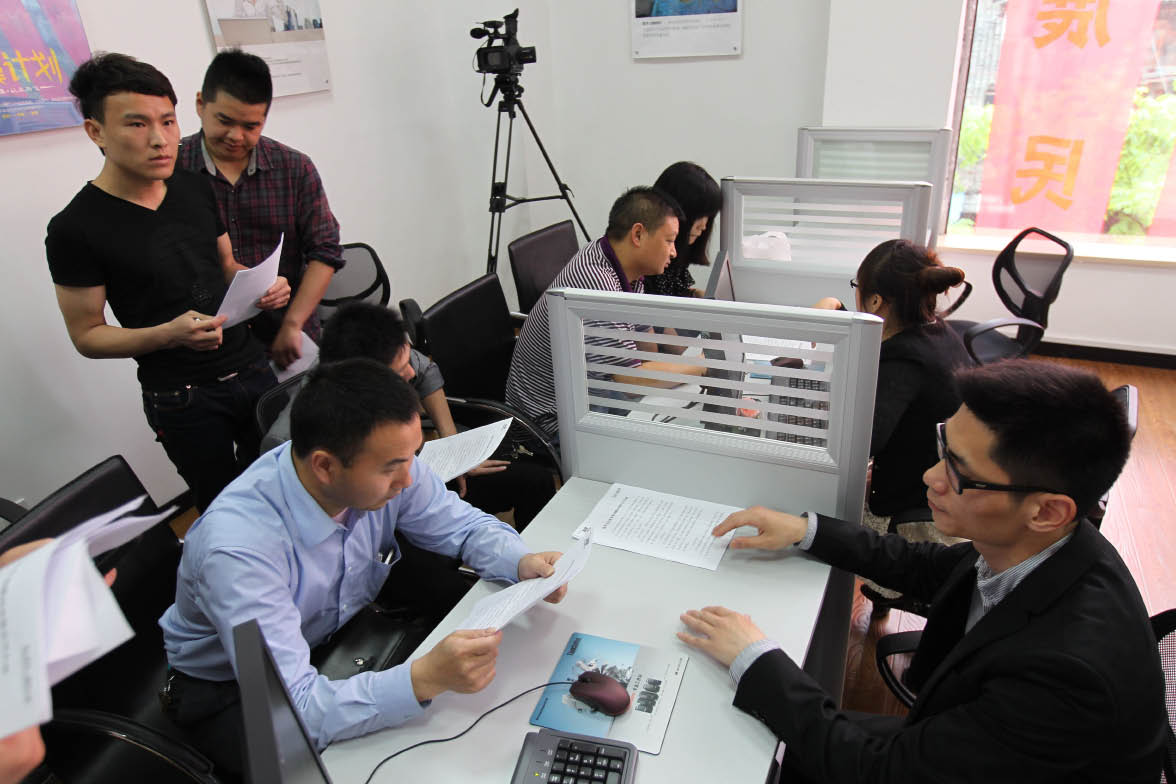China Further Opens Its Financial Sector
By special correspondent LIU QIONG
FOR the last two years many business owners have been fleeing Zhejiang Province’s Wenzhou, a city that has become famous for its production of small commodities. Facing problems such as the rising cost of raw materials, many businessmen have been crushed by huge debts.
Wenzhou’s plight means that private money has nowhere to go but real estate or speculation in commodities such as coal and vegetables, while small and medium-sized enterprises (SMEs) are short of funds even though they have projects to complete. Funding problems arising from kinks in the finiancial system have been damaging China’s economic health for some time.
The current financial system is dominated by state-owned banks, which prefer to lend money to big state-owned enterprises, leaving SMEs, most of which are struggling to make a profit, out in the cold. Since the central bank began tightening the money supply two years ago, the problem has been getting worse.
 |
|
On April 26, 2012, the Wenzhou Private Lending Registration Service Center was opened in Wenzhou, Zhejiang Province. Photos by CFP |
SMEs’ share of loans, though growing, is a paltry 36.8 percent but they are responsible for 60 percent of GDP and 77 percent of employment. It is clear that there is a huge imbalance between SMEs’ contribution to the economy and the resources available to them. This situation is in dire need of change, and to do this it is essential to reform the financial system so as to channel private capital into the real economy.
A Freer Financial Sector in Need
In 1986, Yang Jiaxing launched Wenzhou Lucheng Urban Credit Cooperative, which, as the first shareholding private bank in the People’s Republic of China, broke the monopoly of state-run banks in Wenzhou. However, in the decade after Yang opened the bank, financial innovation stagnated. In 1995, upon hearing that the 43 private urban credit cooperatives and financial service companies would be merged into state-owned financial bodies, Yang closed down his bank.
Since then, the central government has introduced certain policies to encourage private capital to enter the financial sector, including two sets of clauses on the private economy in 2005 and 2010. Another step forward was the legalization of small loan companies in 2008, but insufficient management and supervision led to the financial sector sliding into a disorder as financial reform stagnated.
Today, state-run banks still dominate the domestic financial market, holding over 70 percent of the total assets of the banking industry. “Such a monopoly is inappropriate and there is no mechanism that serves SMEs and micro businesses,” says Long Yongtu, former vice minister of Foreign Trade and Economic Cooperation. He pointed out that the financial sector’s opening-up domestically is required to serve China’s developing economy.
According to the annual report of 2011, the five major state-owned commercial banks saw profit of RMB 670 billion and China’s listed commercial banks raked in net profits of RMB 1.04 trillion, about half of the profits for all China’s listed companies that year. The return on equity (ROE) of many banks remains at around 20 percent.
Financial reform is also needed to combat underground lending and its extortionate interest rates, which have been a driving force in the exodus of businesspeople from Wenzhou. Zhou Dewen, chairman of the Wenzhou SME Development Association, proposed the opening-up of the domestic financial market to deal with the problem during Premier Wen Jiabao’s inspection of Wenzhou last year, who agrees with this sentiment. “The monopoly of state-owned banks must be broken up to make way for private capital to enter the financial sector,” the Premier said last April, concerned that the monopoly of a small number of banks meant restriction of funding channels.
One only has to look at southern China’s Guangdong Province to see evidence of how private financial institutions can help SMEs. Research by Fudan University shows that the SMEs in Dongguan City of Guangdong have less difficulty finding finance than those in most other parts of China. Among the reasons for this is that Dongguan is home to several lending institutions and credit guarantee companies, whose 14 small-sum loan companies employ almost one tenth of the staff who work at the nation’s 4,144 such companies.
It is hoped that the establishment of Wenzhou City as a comprehensive finance reform pilot area will lead to a more efficient financial industry. Zhou Dewen believes that the move will create a favorable environment for private capital and private financial institutions to provide support to the real economy and help solve problems such as private capital with nowhere to invest, SME funding shortfalls and underground lending. He holds that the government should improve the legal system to supervise financial service providers, instead of prohibiting their development.
According to Cao Yuanzheng, chief economist of the Bank of China, in order to make the finance sector better serve ordinary people and the real economy, China needs to encourage innovations in the finance industry and the establishment of medium-sized and small financial institutions. Furthermore, capital financing of SMEs should be encouraged to increase their debt capacity.
Accelerating External Opening-Up of the Financial Sector
Alongside the establishment of Wenzhou City as a comprehensive financial reform pilot area, the opening up of the domestic financial market and the deepening of financial system reform are anticipated. In the decade since China entered the WTO, its capital market has been gradually opening up to the world, the focus of which has been the introduction of international capital.
In 2002 and 2006, China launched the qualified foreign institutional investor (QFII) program and qualified domestic institutional investor (QDII) program respectively. The QFII program allows qualified foreign investors to invest in China’s stock market and the QDII program allows qualified domestic investors to invest in foreign securities markets. In 2011 China issued rules for pilot programs of the RMB qualified foreign institutional investor (RQFII), allowing the investment of overseas RMB funds in mainland securities markets.
Until now QFII certificates have been granted to 158 institutions from 23 countries and regions, among which are 82 asset management companies, 11 insurance companies, 29 sovereign funds, pension funds and donation funds, 23 commercial banks and 13 securities companies. By March 2012, the total assets in QFII accounts reached RMB 265.6 billion, with equities, bonds and bank deposits making up 74.5 percent, 13.7 percent and 9.6 percent respectively. The market cap of equities by QFII investors accounts for 1.09 percent of the free-floating market cap in the A-share market.
The launch of these programs has helped set up a mechanism for regulating cross-border securities investment and capital flow and promoting the opening-up and development of domestic capital market. The market is set to open wider to foreign investors. The China Securities Regulatory Commission (CSRC) announced on April 3 that QFII quotas would be raised from US $30 billion to US $80 billion, while RQFII quotas would be raised from RMB 20 billion to RMB 70 billion.
Efforts will also be made to steadily improve the convertibility of the RMB under the capital account, increase the use of RMB in cross-border trade and investment, expand channels for capital outflow, encourage qualified domestic financial institutions to go global, ease restrictions on overseas investment by domestic residents, promote the opening-up of the domestic financial market and establish and perfect a cross-border capital supervision system. With incoming investment on the increase and the prospect of liberalization in the financial sector, SMEs should soon see much improved opportunities for funding, meaning that, hopefully, Wenzhou’s businessmen will experience a more secure environment and have the confidence to stay in their town to do business.






